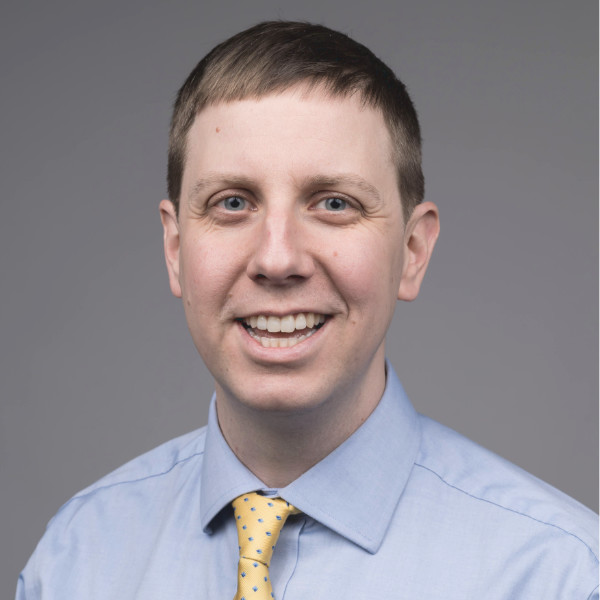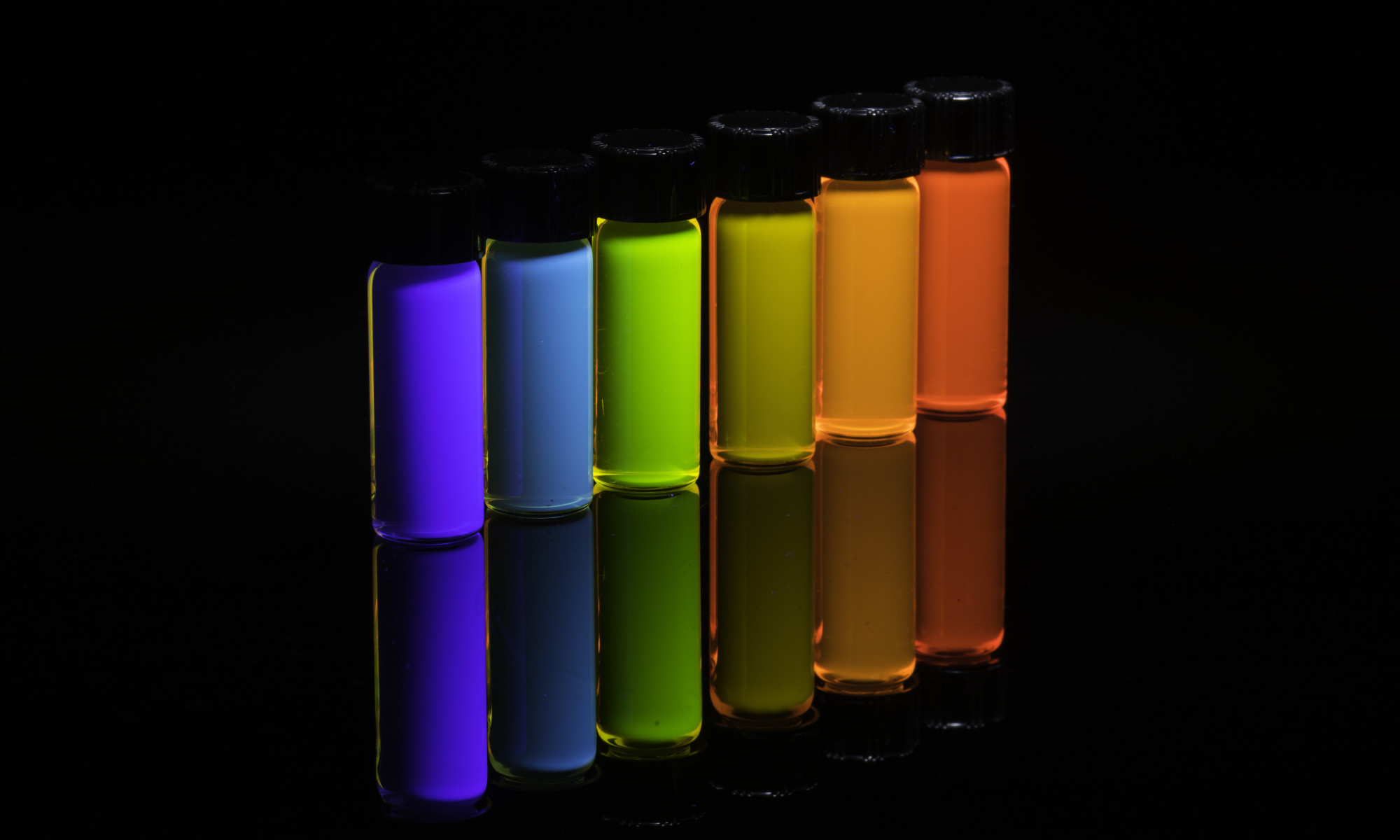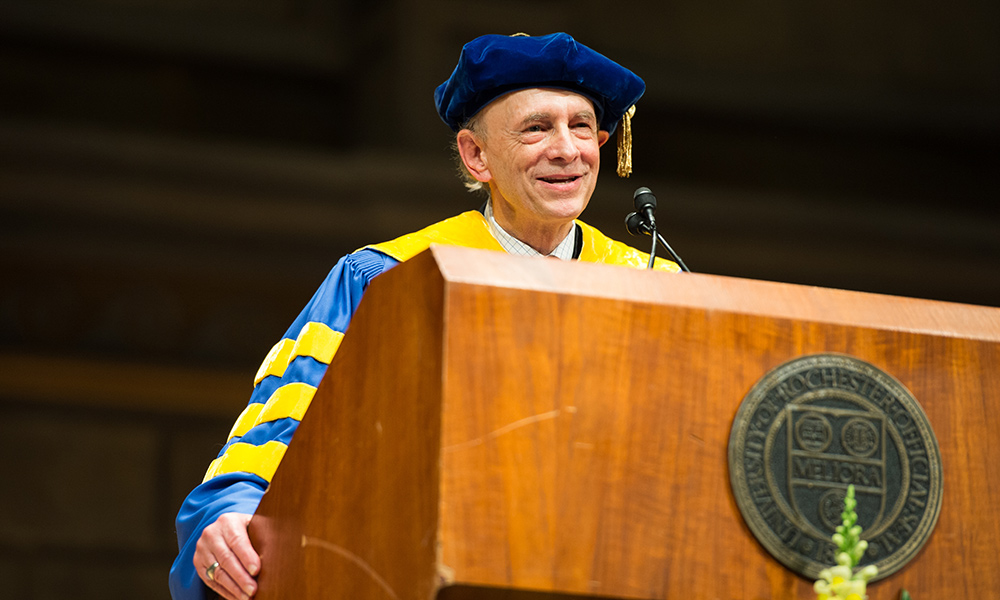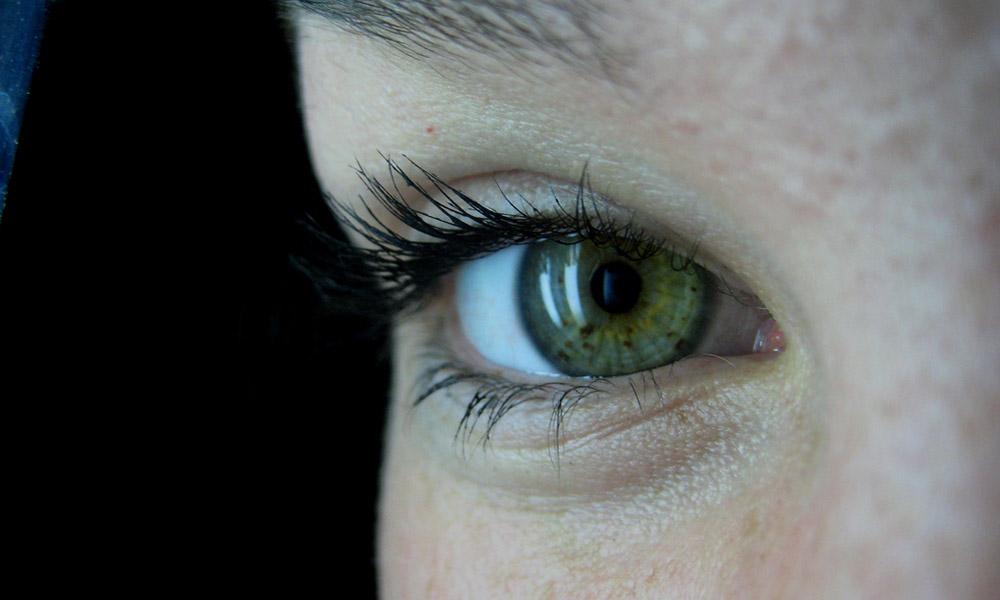The fruits of the Nobel laureates’ labor can be seen not only in high-end monitors and screens, but also in collaborative research across the sciences.
Three pioneers of nanotechnology received the 2023 Nobel Prize in Chemistry for their work discovering and synthesizing quantum dots, a development one of their mentees says was “mind-blowing” at the time.
Moungi Bawendi, Louis Brus, and Alexei Ekimov are the latest Nobel laureates in chemistry. Professor Todd Krauss from the University of Rochester’s Department of Chemistry and Institute of Optics has met all three—and even studied quantum dots with Brus as a postdoctoral researcher at Columbia University from 1998 to 2000.
The laws of chemistry state that a material’s properties are largely governed by its chemical composition. But when matter is squeezed into nano-dimensions, those properties are determined by a different set of rules known as quantum phenomena. In the 1980s, Brus and Ekimov independently created nanoparticles known as quantum dots that produced different colors by manipulating the size of the particle. Bawendi later refined the process for controlling the size and surface chemistry of quantum dots.
“The idea that you could change the color of the material simply by changing the particle’s size was incomprehensible before that discovery,” says Krauss. “It’s like breaking a cookie in half and having each half taste different than the whole. Showing that size determines the fundamental properties of these materials was the type of groundbreaking discovery that Nobel Prizes are all about.”
Krauss says the fruits of the Nobel laureates’ labor can be seen most often today in high-end QLED monitors and TV screens that use quantum dots to produce vivid colors. But scientists believe quantum dots could soon lead to advances in drug discovery, solar cells, encrypted communication, and more.
“For the first 20 years, the field was really interested in understanding how to controllably grow the spherical particles, how to make them highly fluorescent, and understand how electrons in the quantum dot reacted to light,” says Krauss. “The last 20 years have been more focused on what I would call the flora and fauna of nanoparticles. We’re exploring different compositions, and geometries including rods, spheres, tripods, and moving on to new potential applications.”

Connecting the quantum dots
Krauss says he and other Rochester faculty, including fellow chemistry professor Kathryn Knowles ’08, continue to untangle some of the remaining mysteries of quantum dots. He is currently part of a national initiative, funded by the US Department of Energy, to advance quantum science and technology and Knowles received a National Science Foundation CAREER award to study the fundamental properties of semiconductors made of nanoscale materials. Meanwhile, in Hutchison Hall on the River Campus, Rochester biologists are partnering with chemistry faculty to incorporate quantum dots into the 3D printing of living material.
Having spent time (quite a few years ago now) in Louis Brus’s lab, and seen firsthand his influence on the whole field, it is great to see #NobelPrize2023 go to not just a fantastic scientist but an even better person. https://t.co/CnxfFDzfsy
— Krauss Group (@KraussLabUR) October 4, 2023
According to Krauss, the field is thriving in part because of a collaborative atmosphere fostered by Brus, whom he calls a brilliant but humble scientist, one who is also a great mentor and person. The two have kept in touch over the years, with Brus visiting Rochester in 2015 to deliver the chemistry department’s W. Albert Noyes Jr. Memorial Lecture.
“He has really showed people how to do science in a healthy and collaborative way,” says Krauss. “I think that’s helped the field to grow so that we are working collectively together on different problems without trying to tear each other down.”
He adds, “So many people have worked with Louis directly or indirectly—and he taught us that if we find an interesting discovery or result, we need to pursue it relentlessly. Don’t just go after what you expect the result to be. If you see something unexpected, that’s when something magical could happen.”





